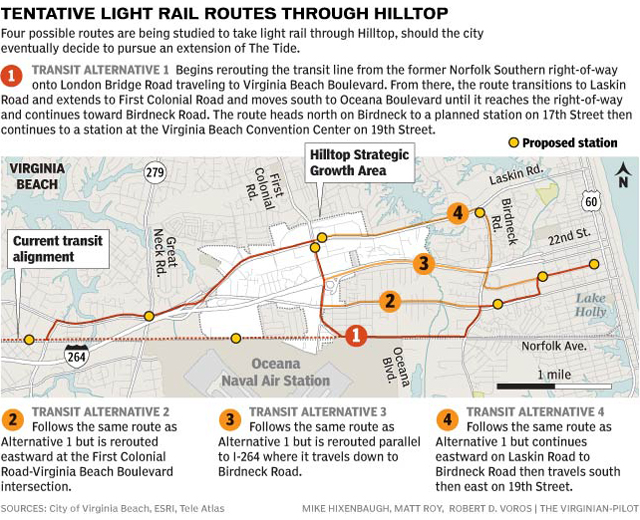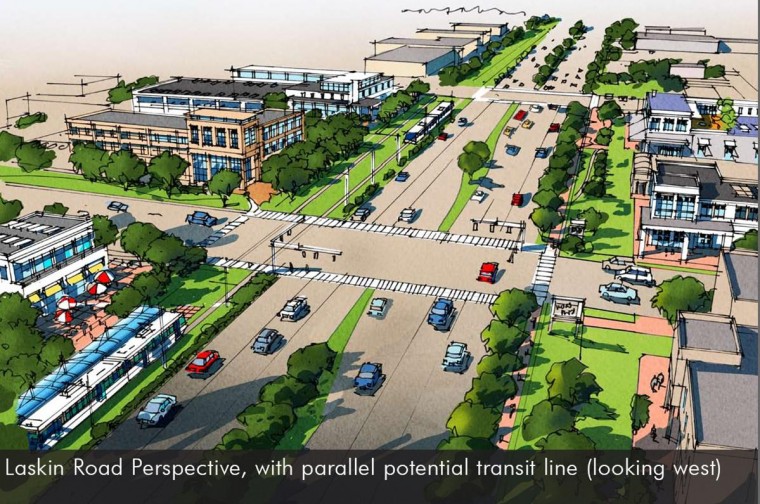You are currently browsing all posts tagged with 'Hampton Roads'.
CONTEMPORARY CRAFTSMAN, OPEN FOR VIRTUAL TOUR
posted on Tuesday, May 2nd, 2017 at 1:57 pm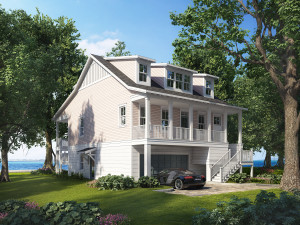
This house is designed for a picturesque beachfront lot on the Chesapeake Bay, locally known as Chick’s Beach in Virginia Beach. We label it “contemporary” because it has a very open floor plan, with Great Room-Kitchen-and Dining in a single room open to a covered porch deck facing the beach. The Master Bedroom is on the third floor with its own private balcony deck overlooking the beach. It is three stories, 4 bedrooms, 3,000 SF of living area, exclusive of porches, decks and garage. The upshot of this post is that the approved plans, ready to construct on this property are currently FOR SALE.
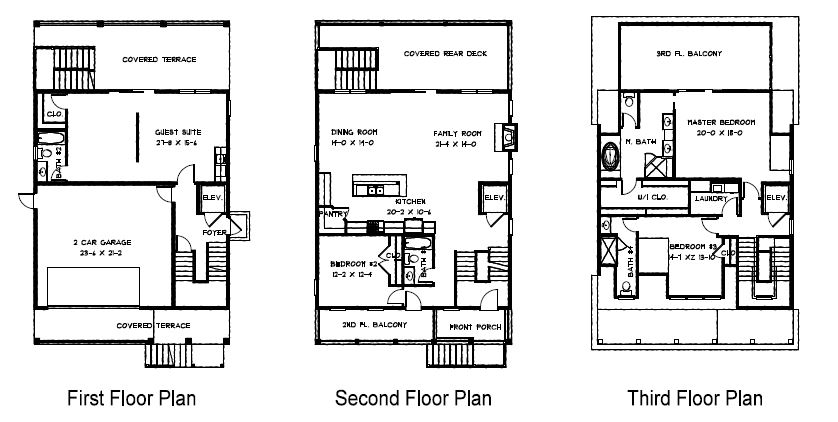
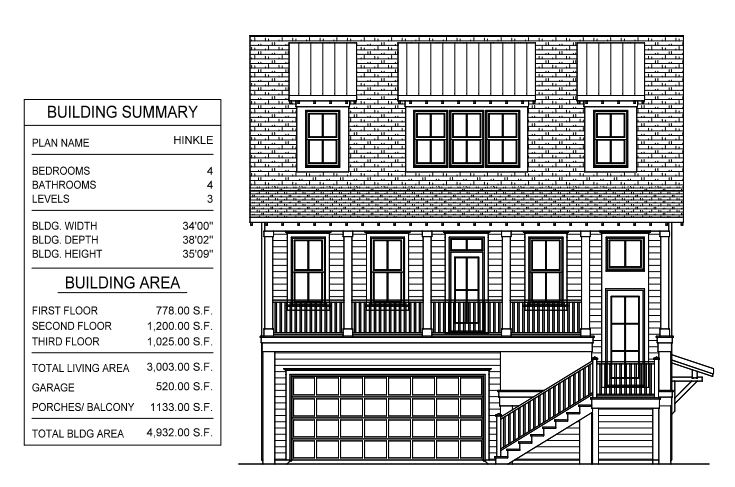
Tags: architecture, design, Hampton Roads, residential, Virginia, virginia beach, waterfront
Anatomy of a Modern Farmhouse, plan
posted on Monday, April 24th, 2017 at 12:09 pm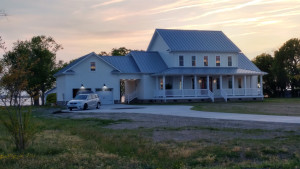
According to the building style trend trackers the Modern Farmhouse is “In”. As we read the hype, this style calls for covered porches on the front an rear and a very open floor plan with first floor master. We have named this model plan Knots Island Farmhouse
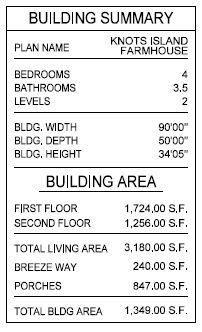
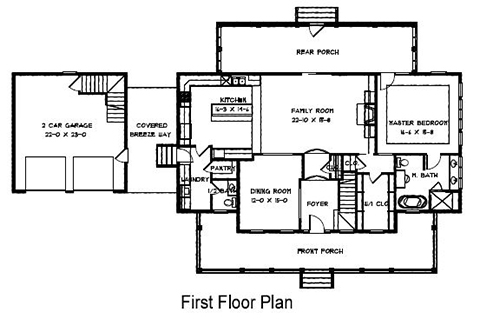
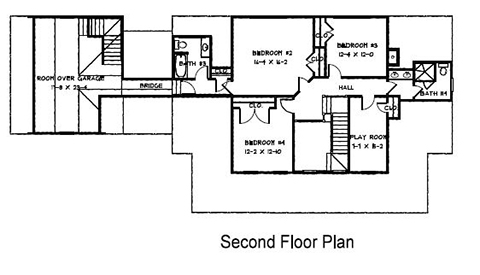
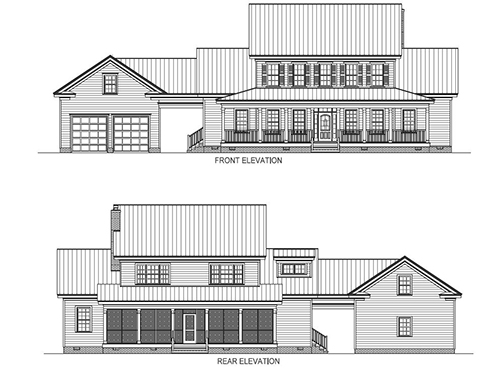
Tags: farmhouse, Hampton Roads, Neighborhood, residential, single family
The alternative to extending Light Rail now is a Grim Tale
posted on Wednesday, November 13th, 2013 at 4:28 pmLight Rail “nay sayers” have a view of the future that our choice is between (1) more and wider roads, or (2) a fixed rail link between regional communities that is likely to run in the red for the near term.
Choice (1) is folly since building roads destroys the environment and fossil fuels will inevitably run out for our private cars to drive on them. More roads also spreads out the population settlement pattern that in turn requires even more roads, greater destruction of the environment, more pollution and further commuting congestion and community separation.
Choice (2) will run in the red until settlement patterns catch up with the regional vision of the future. Light rail is expensive and requires investment at the earliest opportunity for a sustainable future.
I was charmed with the photo of the front page of the Hampton Roads section of the Virginian Pilot this morning. Imagine, three private proposals for extending the TIDE light rail from Norfolk into Virginia Beach. What a bright future there could be in the future of Hampton Roads.
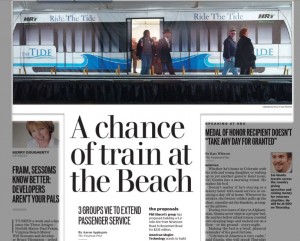
The reason that the smaller metropolitan area of Charlotte, NC already has light rail serving its commuter population could be because the political leadership there is operating with a vision of itself as a cohesive regional economy, rather than a balkanized satellite cities competing for a separate piece of action.
It seems to me there are regional transportation investments that could make a huge difference in the future growth of Hampton Roads towards becoming the regional economy that it deserves to be: (1) an expanded commuter Light Rail system, and (2) an expanded nationally focused airport with its own designated airline Hub.
Earlier this week Governor-Elect Terry McAuliffe included mention of his support for extending light rail to Virginia Beach: “One important issue that I did campaign on — it is time we took light rail all the way from our naval base all the way to Virginia Beach.”
It is worth a chuckle to see the photo of Kerry Dougherty, at the top of her column, overshadowed by the banner image of The TIDE rail car along with the headline: “A Chance of Train at the Beach.” As if to say, “Kerry, you missed the train,” with her non-supportive commentaries, completely misunderstanding the opportunity that light rail means for the region of Hampton Roads.
Tags: future, Hampton Roads, investment, Light Rail, region, The Tide, transportion, virginia beach
Selecting an established commercial hub is a prime Light Rail station stop
posted on Saturday, June 2nd, 2012 at 8:27 pmThe idea of diverting the LR route from the rail Right of Way to the service access roads at Hilltop came from a resident participant at the Strategic Growth Area public forum. That was only last month. The consultant has already offered alternate routes, how responsive is that? Bravo!
The best thing about the extension of light rail to the Virginia Beach resort area is the development patterns that will be anchored at the selected station stops. To quote an article regarding the settlement pattern improvements resulting from the introduction of the new Metro Light Rail in Phoenix: “…they (station stops) draw development around them and with it people, density, culture and business vibrancy …a place where local color develops and evolves at a greater speed and depth than sleeper communities.”
It seems to me that the benefits of improving neighborhood places (insert Hilltop) to become more “centralized, sustainable, and walkable” is accelerated by choosing it as a light rail station stop. If there is a flaw with the vision of The Tide in Norfolk it is that the choice of station stops outside of the CBD. They are “sleepers”. The neighborhood development opportunities at Newtown Road, for example, are enormous and there is nothing there yet.
I continue to be frustrated with the banter that gets published in the newspaper that reduces the discussion of the extension of light rail to Virginia Beach as a matter of public investment accounting. Pubic policy makers (federal, state and local) are currently accustomed to making decisions to subsidize highways almost exclusively. Those expenditure decisions benefit oil companies, automobile makers, and tunnel contractors, as we are painfully aware. What about us? the citizens of Hampton Roads. What do we want?
I am grateful that we will get our day in the voting booth to voice our choice for an alternative to the proliferation of everything associated with dependence on the private automobile as our only means of transportation. I believe that the citizen’s perspective of the best alternatives for transportation investment in the future is more far-sighted than the transportation establishment. The current policy makers view has resulted in funding a 2.1 billion dollar midtown tunnel project. A better choice would have been to extend a light rail tube into Portsmouth.
Budgeting our precious public funds to extend highways and enlarge tunnels results in more roadways that inevitably become clogged with ever greater numbers of automobiles (contributing to air pollution, traffic congestion, accidents and lost time commuting). These expenditures consume vast amounts of vacant land for more and wider roads, thereby creating the need for further expenditures of tax monies to handle storm water runoff, landscape maintenance and noise separation barriers.
The choice for highway investment promotes wasteful low-density residential developments of architectural monotony, encouraging “look alike” subdivisions of single-family units separated by individual driveways with cars parked in front yards.
The choice for highway investment promotes an automobile oriented shopping centers surrounded by acres and acres of pavement that require a car to reach. It is reported that the capital cost to the local government of a parking space at a shopping center is currently $8,000. What is the public value of that expense?
Light rail is the logical alternative to exclusive investment in providing for the private automobile. It is almost like a prophesy for the future of Hampton Roads that the citizens should be the voice of vision that gives it life.
Tags: Hampton Roads, Hampton Roads Transit, Hilltop, HRT, Light Rail, Light Rail Extension, Metro Light Rail, Phoenix, public transportation, virginia beach
Midtown Tunnel design missed Light Rail completely
posted on Sunday, April 29th, 2012 at 3:20 pm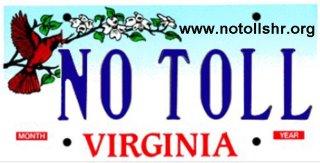 There is political momentum and apparently popular enthusiasm in the press for extending the Tide light rail to the resort area of Virginia Beach. I am anxious to vote my support for that project. I consider the light rail proponents to be cultural visionaries for the future of the whole of Hampton Roads.
There is political momentum and apparently popular enthusiasm in the press for extending the Tide light rail to the resort area of Virginia Beach. I am anxious to vote my support for that project. I consider the light rail proponents to be cultural visionaries for the future of the whole of Hampton Roads.
It takes a somewhat bigger view of the future to see the broad opportunities that light rail could have in the future of Hampton Roads, beyond the extension to the Beach. The bigger view was brought home to me upon attending an event sponsored by DBIA, Hampton Roads chapter of the Design Build Institute of America. The March 2012 presentation was conducted by the engineers responsible for the construction design of the new Midtown Tunnel.
The technical engineering expertise provided in the presentation was brilliant, but there is a doubt about this project that pervades anytime the project is mentioned, regardless of the circle. The voices of municipal leadership when speaking about the pending imposition of tolls is with gritted teeth, “we have to accept it.” No one can recall how public comment was invited into the deliberation of the merits of this project, certainly not Portsmouth citizens: Would you like another midtown tunnel? …by the way it will come with a nearly $2 toll each way.
The future impact of this project is clouded. The EZpass toll collection mechanism is fraught with problems. As soon as the tunnel starts collecting the toll local drivers will avoid using it. The statistical overcrowded volume of traffic will suddenly be diminished. The cityscape of Portsmouth will be irreparably desecrated by the flyovers and ramp exchanges to reach 264. Portsmouth will be orphaned economically for the foreseeable future, perhaps until the VDOT decision makers initiate tolling all the bridges and byways to mitigate the isolation of Portsmouth.
There is a better idea to solve this dilemma, compelling logic of a different course of action, other than a new Midtown tunnel, that would strengthen the cultural integration of the region and at the same time relieve the traffic congestion in the existing midtown tunnel. The DBIA event of last month was concluded by questions from an audience of more than a hundred planners, architects, engineers and interested professionals. The last question of the presentation was: Did you consider adding a light rail line to fit into the new tunnel tube?
The speaker casually offered a solution to the omission of a light rail line in their midtown tunnel design by saying that it could easily be added at a later time, by a different kind of tube, at much less cost than trying to include it within the concrete tube that had been designed and funded. The profound dichotomy of this response may be the answer to the midtown tunnel dilemma. I propose that tax funds earmarked for the construction of the new concrete tunnel should be diverted to the “much less expensive” project adding a steel tube tunnel to extend light rail across the channel to Portsmouth. (The Tide currently ends a few thousand feet from the existing midtown tunnel entrance.)
I admit endorsement of light rail to Portsmouth takes some ponderous extrapolation of current passenger data to be a believer. (Virginia Beach is taking three years for a third party study to justify its extension.) For now, consider the intuitive logic of how light rail builds community neighborhood nodes at the station stops. The beauty and cultural vibrancy of an existing urban environment such as Portsmouth is renewed and reinforced by the architectural identity of becoming a destination place for light rail.
Consider the effect of what happens as the price of gasoline climbs steeper and steeper. Vehicle miles traveled are already plummeting. Independent economic choices are being made daily, toward more fuel efficient cars, combining trip purposes, and car pooling. Project our $4 per gallon gasoline to $12 per gallon (the current price of gasoline in Copenhagen) and what happens? Light rail and buses and bicycles become important alternatives to driving the household car. The midtown tunnel project should be evaluated in a 100-year time horizon for its cultural impact, just as we commonly do for designing for a 100-year flood plane for public safety.
As one focuses on a picture a future with much less car driving we begin to see changing urban settlement patterns toward higher density urban living (more dwelling units per acre) where lifestyles move toward neighborhood walking to shop, for entertainment, to recreate and to use public transportation. Fixed transit routes such as light rail are the preferred means of mass transportation. This future vision is much healthier since we walk more regularly, the air is cleaner, and it is also much friendlier since we are interacting with other passersby at closer proximity on a daily basis.
When you can find this vision of the future an attractive alternative to making greater and greater capital improvement investment in accommodating the almighty automobile there is wisdom in scrapping the midtown tunnel project and swiftly switching our precious public funds into a much cheaper light rail tube across the midtown channel. All of the horrible unfairness of the tolls is eliminated. Vehicle traffic in the existing tunnel will diminish. The goals of regional integration of the separate municipal boundaries become less distinct.
I don’t want to imply that the Midtown extension of the light rail should take precedence over the project of bringing it to the resort area of Virginia Beach. We want both extensions. In fact, if the pot of gold that is available to pay for the new midtown tunnel was directly transferrable to pay for our light rail improvements it appears that there would be enough money to cover both extension projects.
Can we abandon the new Midtown Tunnel project at this point in time? The answer is: YES, of course. Engineers and architects do occasionally work on projects that are never built. Owners and end users do change their minds about following through with a design. The engineers get paid for their efforts and life goes on, hopefully for the better. There is a provision in the Midtown contract agreement that spells out the procedure for project termination.
This last minute rethinking is not really the last minute but it is an opportune decision point. Among the objectives spelled out in the DESIGN-BUILD CONTRACT with Skanska (SKW Contractors), December 5, 2011, the Midtown Tunnel project was supposed to: Increase transit service between Portsmouth and Norfolk. This exact language was spelled out in the agreement under the heading KEY COMPONENTS OF THE PROJECT. Needless to say the project we are getting fails categorically on this component. There is still time to save the day.
PS – I wrote this article a month ago and sent it to Virginian Pilot “letters to the editor”.
Tags: Hampton Roads, Light Rail, Midtown Tunnel, new urbanism, notollshr, Portsmouth
Light Rail extension into Virginia Beach, sooner, rather than later
posted on Sunday, February 5th, 2012 at 9:51 pmDoes a proper vision of the future form of Hampton Roads include light rail transit? The question is more controversial than I imagined, most recently triggered by the story in the Virginia Pilot that there could be a referendum in November for the extension of the Tide into Virginia Beach. As of this writing, there is posted nearly 300 reader comments in response to the article written one week ago. The article included some of the political “weighing in” of local elected officials.
My own attitude starts with the notion that the actions to be taken should be directed at maintaining and improving the region as a healthy place to live, recreate, earn a living, enjoying the beauty of the surroundings and preserving it for future generations. (Insert the name of your home place, there should be no disagreement.) Does that vision include light rail transit? I think it does. Here are some reasons that creating a referendum in November are timely opportunity to take:
1. The Tide has demonstrated a measure of success but it is incomplete until it is extended to include linking with a larger geographic area and the other cities of Hampton Roads. (The future of the automobile as the only mode of transportation for creating settlement patterns of the best urban places possible is changing.) The longer the extension of the Tide is put off the greater will be the delay in realizing the best vision of the future of this place, Hampton Roads.
2. There is a financial opportunity to make the extension to Virginia Beach in a not-too-distant future by virtue of the federal funding that is available. It is the best priority to follow, as a practical matter, since it will take decades for the full realization of the light rail network that is desirable in the “best future” vision.
3. A six-million dollar study is underway, purportedly to recommend the most practical form for the future of public transit in Hampton Roads. (There is no doubt that an increased interest in public transit in the future of this region is coming. That is a sure bet. What form it takes, buses or rapid transit or light rail, will shape the future development patterns for the better or worse.) Is it necessary to have a high-powered study completed to have an opinion on a vision of the future? Is the price tag really that much in doubt? Is the allocation of funds to create this transportation improvement that much different than making new roads or bridges to subsidize our dependence on the automobile?
4. Doing nothing, postponing or avoiding taking a stand on how to improve public transit into the best vision of the future for Hampton Roads, is irresponsible. Since a referendum would be necessary at the completion of the study that could delay the time it takes to get the light rail option started and jeopardize the availability of federal funds, not to mention the increased capital expenditures due to rising construction costs.
5. Critics of the extension project have cited the crime problems of the Baltimore Light Rail Station in Linthicum as an inherent objection to light rail. But that is an irrelevant distraction to the opportunities at hand with the extension of the Tide into Virginia Beach. Neighborhoods are not all the same. Presumably spending 6 million dollars on a study provides some insight into recommendations for station location, physical design and security considerations. Linthicum is not Bird Neck Road, that would be the last station on the extension corridor under consideration.
6. Lest it be forgotten, Virginia Beach already owns the existing Norfolk Southern right of way from Newtown Road to Bird Neck Road. That purchase was settled in September 2010. Council members voted unanimously to close the deal. It was a year earlier that the city purchased the former Circuit City property next to Town Center for a future location of a Light Rail Station. At that time the mayor promised a public referendum on the extension of the Tide, upon the conclusion of the transit feasibility study. Adjusting the timing of that referendum, in consideration of the funding sources available, is being a prudent consumer as opposed to a public manipulator.
I am excited about re-shaping neighborhood development patterns that would be driven by the introduction of light rail stations as a result of the extension of the Tide into Virginia Beach. (Extending rubber tire bus routes will not produce the same development opportunities for community place identification.) Yes, some real estate investors will make more than their share of opportunistic wind falls or more modest up ticks. If the vision of the future is for a Hampton Roads to be composed of urban community enclaves with denser development patterns, centralized, walkable, integrated communities and composed of buildings architecturally sustainable and diverse – I say, the sooner the better.
Tags: Hampton Roads, HRT, Light Rail, Neighborhood, referendum, retail development, stations, The Tide
2012 Shaping the future of Hampton Roads, Virginia
posted on Sunday, January 29th, 2012 at 8:46 pmThe Virginian Pilot this week has been chock-a-block with significant stories that could foretell some remarkable physical transformations of Hampton Roads for years to come. The visions of the future urban planning opportunities are all around.
1. HRT has established a bus route to Norfolk International Airport, 1/27/12 (how long have our airline travelers been deprived of this simple service?) It starts on February 5 and will be in effect only until March 10 to test customer interest. I think everyone should drive over to the airport and take a bus ride someplace to rack up some passenger data that will establish the service permanently. 
2. The editorial cartoon 1/29/12 for choosing a plan for the future of Waterside was worth a thousand words ….resounding the sentiments expressed by one of the Norfolk City council members at this week’s public display of the five plans under consideration: “Do we have to choose one of these?” Those of us in the audience of onlookers know the answer full well: “we want none of these plans if you please, they are all baloney.”
3. A really BIG item this week is the page one story 1/29/12 about a possible referendum in November for extending The Tide light rail into Virginia Beach. This is remarkable since it un-stalls the opportunity to get federal stimulus funds for the project before it’s too late.
4. Urban Outfitters is coming to 271 Granby Street. This news got a huge spread in the Sunday business section 1/22/12. It is actually is very good news, foretelling future prospects of re-establishing downtown Norfolk as retail shopping destination. Congratulations to developer Bobby Wright. This event brought out the editorial commentary of a staff writer, Michelle Washington, to emphasize the belief held by city and regional planners that this kind of development is the beginning of Norfolk’s reemergence as a pedestrian “happening” place, in her words: the city’s Cool Factor.
5. Then there was the story about the Kempsville Historic Master Plan, Beacon 1/29/12, where citizens are concerned about the crossroads acreage at Witchduck Road and Princess Anne. It is proposed to rezone the area to higher density residential use, namely apartments on the property surrounding the former Kemps Landing School structure. We hope that the fears of surrounding residents can be assuaged to allow for the opportunity to give this geographic confluence a sense of place that it lacks at the present time. Kempsville presently is hardly more than a zip code and a school district. Where is it really? How does someone know they are in Kempsville? The change of zoning will allow for a place-making opportunity that careful planning can shape into a desirable place to come, to walk, to mingle and to identify.
6. My last entry of the week’s recap of urban planning opportunities in the Virginian Pilot is kind of “tongue and cheek”, I admit. There was a story in the travel section about the Henry Ford Museum in Dearborn, Michigan. It struck me that cars belong in a museum and that maybe we will stop planning our cities and neighborhoods like life depends on the automobile. I visited Copenhagen this past year, where gasoline is the equivalent of $12 per gallon and the sales tax on purchasing a new car is 180%. In such an environment one learns quickly how to exist without depending on a car. The end result is walkable urban living patterns and some of the best shopping streets in the world.
Tags: Hampton Roads, HRT, Kempsville, planning, The Tide, urban, virginia beach, walkable, Waterside, zoning

